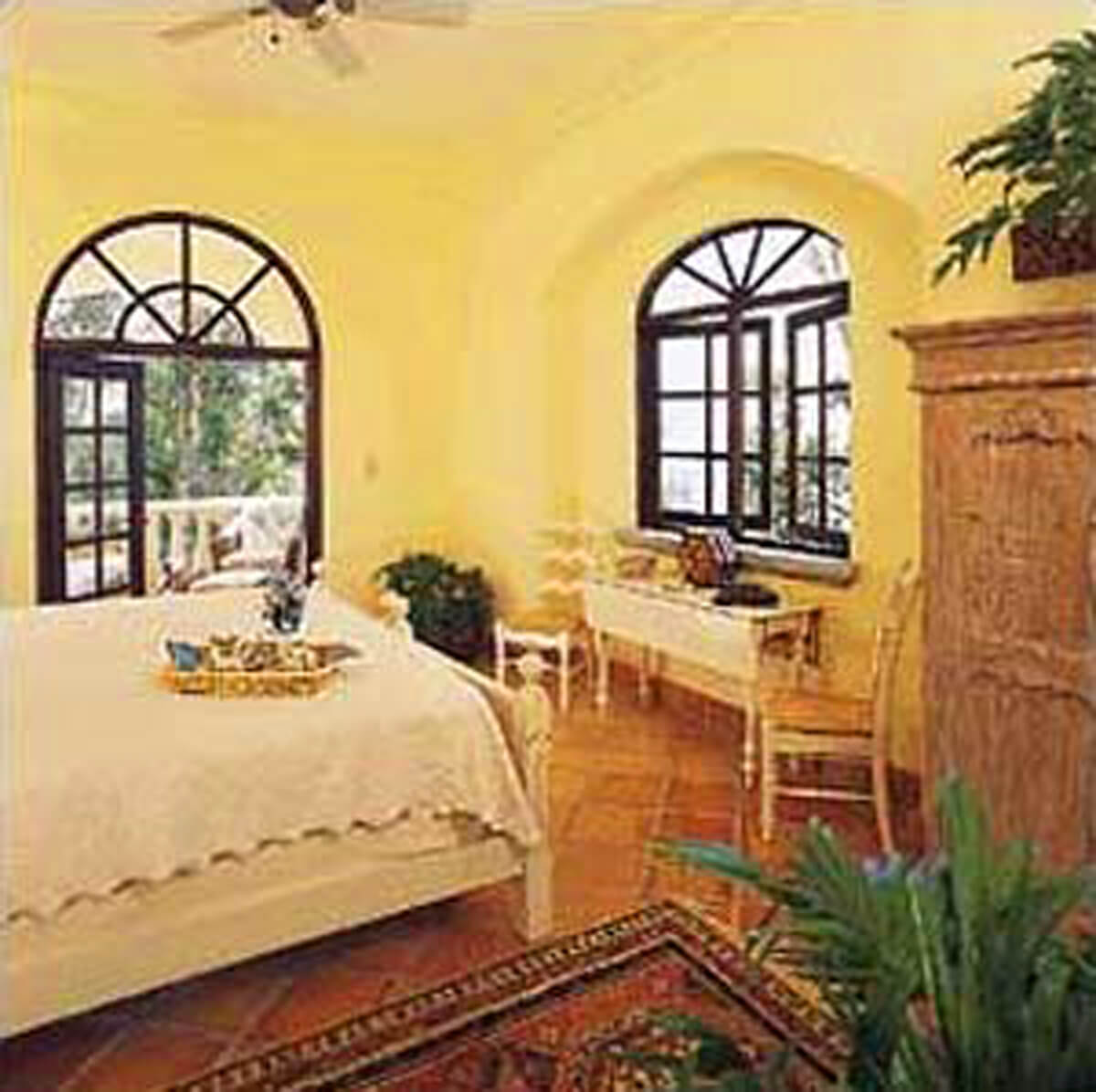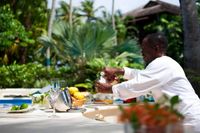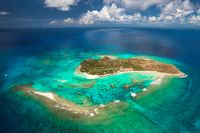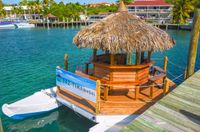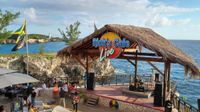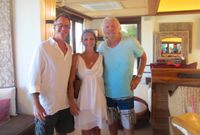Timon, the carefree mongoose who scampers through Walt Disney’s musical sensation “The Lion King,” would feel right at home in the Hakuna Matata Villa, high on a hillside overlooking the U.S. Virgin Island of St. John. In fact, the owners, two world travelers whose journeys have taken them throughout Africa and Asia, named their hideaway after the cartoon creature’s favorite saying, Swahili for “No Worries.”
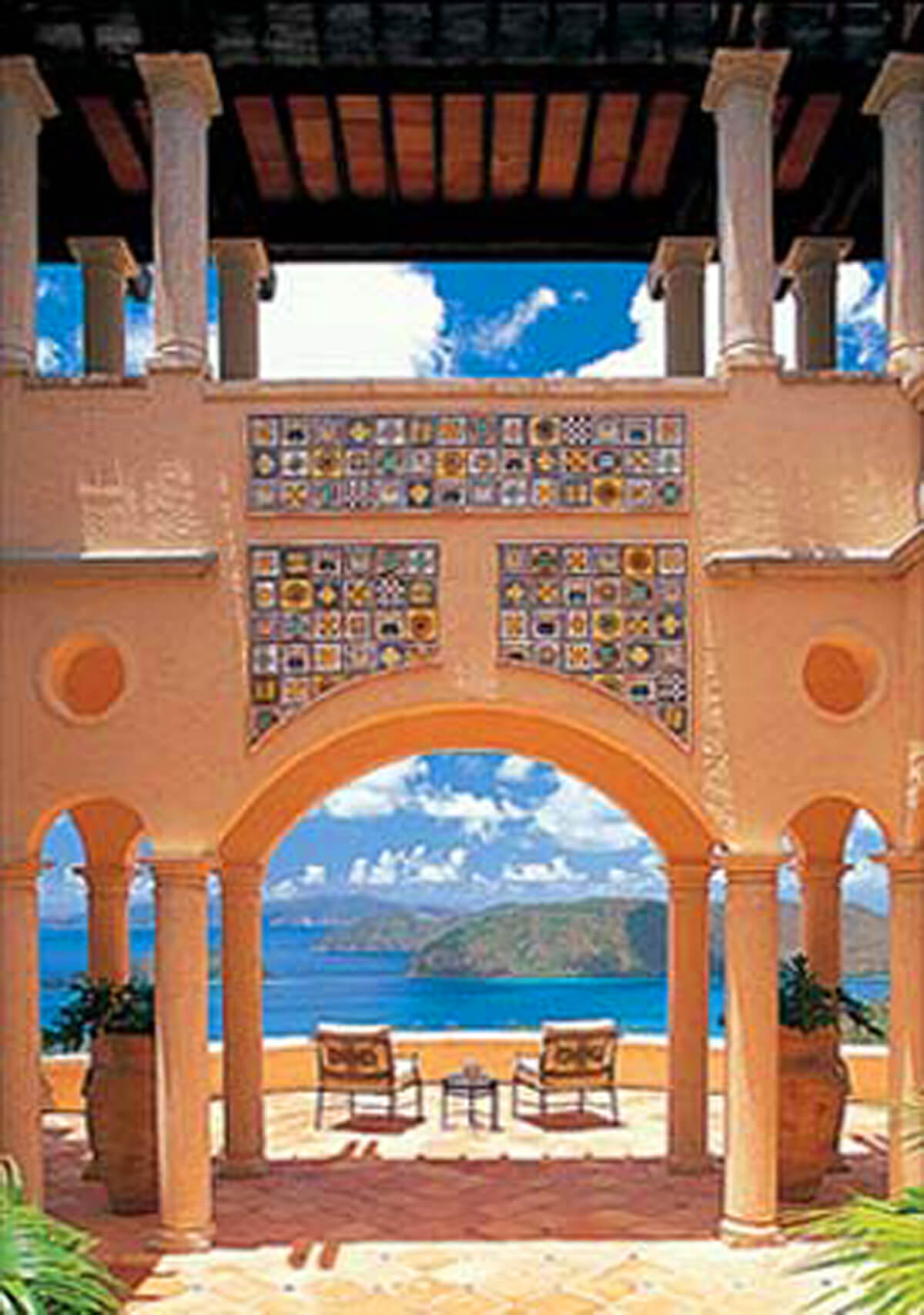
And no worries is exactly how I feel when I step through the two-story wooden doors that mark the palatial entrance to this spectacular villa. It’s hard to think about anything, much less your worries, when your mind is completely swept away by the breathtaking view that greets guests crossing the threshold of the great carved gates.
There before me, the villa is an almost transparent castle of Moorish arches and Italian gardens that draws my eyes out into the blue expanse of Drake’s passage far below. Floating on the sparkling sea, I can easily count half a dozen of the forested hills of the British Virgin Islands.
The view of the villa itself, I am delighted to find, is equally impressive. Since three-quarters of the island of St. John is national park, it’s not surprising that Hakuna Matata, perched halfway up a hillside in the exclusive Catherineburg neighborhood, is deeply private. No matter where I wander on the estate, I can’t spot a single other dwelling. This is one of the joys of finding such a marvelous villa on the island’s forested north shore.
A longtime island resident, whose sea voyages throughout the Caribbean have taken her to several hundred villas, recently told me Hakuna Matata is in her top ten of favorite villas. “Most villas are nice and luxurious,” she said, “but Hakuna Matata has a warm glow to it.” Beyond the small details like Asian throw pillows and wooden statuettes hidden among the rooms, she pointed to the overall atmosphere. “It’s almost a Mediterranean feel up there,” she said. “The colors are warm golds and honeys and yellows and oranges. That’s a marked contrast to the far more common teal blues and cool whites of the more traditional Caribbean architecture.”
This earthy Mediterranean soul is infused throughout the grounds. There are two pavilions that include a living room, dining room and gourmet kitchen. Every room, it seems, is connected by a courtyard or garden path fringed with pillars, archways or French doors. Adding to the Southern European flavor, the walls are a sienna fresco and the floors are a cool, terra cotta stone.
The villa has four bedrooms with en suite bathrooms and an additional two half baths. In a nod at the balmy climate that draws snowbirds every winter, each room has a secluded outdoor shower. One room, I note with a chuckle, is decorated in an African motif, complete with zebra-patterned chairs and a four-foot tall statue of a monkey straight out of The Lion King. “Hakuna Matata,” I hail him with a greeting.
The master bedroom, my bedroom, I note, is all luxury with a four-poster bed carved from thick mahogany and a rich Persian carpet. There is also an airy sitting room, a Jack and Jill bathroom layout, and a private porch for romantic sundowners.
The door, though, is what catches my eye most. It is massive and heavy, a rich dark hardwood carved in an almost Asian fashion. And set within its frame is a second door, a smaller secret gate sealed with a lock. I’m reminded of what my friend told me of Hakuna Matata. “It has secret passageways,” she said gleefully. “You have to look, but they’re there.”
Something else she told me rang true earlier in the day when I discovered a treasure map and compass waiting for me on the dining room table. “Guests with children,” she said, “can hunt for pirate’s treasure buried in the nearby forest. Use the compass and the map the owners leave for the guests and you’ll find a lost cache of little goodies.”
Could be chocolate, I muse. And for a moment I consider becoming a buccaneer for the afternoon. But right now, I’m too relaxed to go treasure hunting or poking around for secret passageways. I decide instead to rejuvenate with a dip in the formless pool.
Cool water is just what I need. Fifteen by forty-five feet, the pool entices me with its deep water and cool blue tiles. A rocky waterfall sits near the main pool. Also within splashing distance is the hot tub, but that will have to wait until the sun is down. For the child in me, there is a delightful plunge shower. I yank the chain and gallons of clear cold water explode over my shoulders in a silver fountain.
After drying off, I take a quick tour of the kitchen in anticipation of dining with an evening view of Cinnamon Bay. Cooking, I realize, will be just as much a part of the relaxing experience at Hakuna Matata as dining. With wide open counters, a gas range with a spotless copper hood, and a deep Sub-Zero refrigerator and freezer combination, I know I’ll be spending some serious time in this gourmet kitchen.
Back out on the porch, I enjoy the afternoon breezes rising from Cinnamon Bay, the potted fan palms bouncing in the wind. I watch a pair of sailboats racing out into the passage, slicing down whitecaps.
I’m meeting a friend for drinks in an hour down at the bay, I remember. Suddenly I feel a recently forgotten sensation creeping back into me. Something ominous. Worry? If the treasure is chocolate, then maybe it is already melting, I fret. A bead of sweat forms on my forehead; a crease streaks my brow. “Hakuna Matata,” I tell myself. But just to be safe, I head back to the dining room and grab the map and compass.

